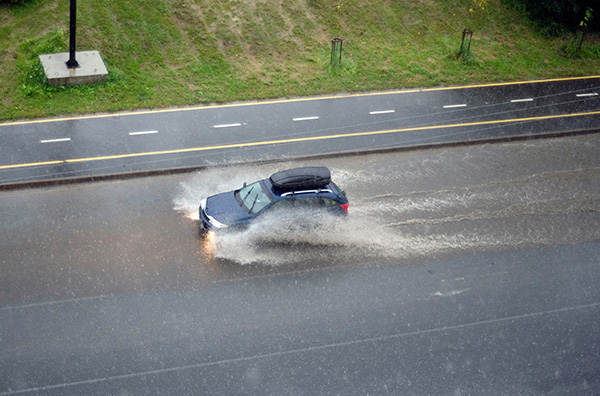
Driving in wet conditions always carries a certain level of risk, but when you add speed into the mix, the danger can escalate significantly. Hydroplaning is a phenomenon where a layer of water builds between your tires and the road, which can lead to a complete loss of control. Understanding how speed influences this risk is crucial for ensuring safety during rainy weather.
The Basics of Hydroplaning
Hydroplaning occurs when water on the road accumulates faster than your tires can disperse it. This layer of water causes the tires to lose contact with the road surface, leading to a loss of traction. Without traction, steering, braking, and accelerating become ineffective, making hydroplaning a serious hazard.
Speed and Its Impact on Hydroplaning
The relationship between speed and hydroplaning is straightforward: the faster you drive, the greater the risk. At higher speeds, tires have less time to push water out of the way, increasing the likelihood of lifting off the road surface. This is why hydroplaning is most likely to occur at speeds over 35 mph, but it can happen at lower speeds if water accumulation is significant.
Why Reducing Speed Helps
Slowing down is the simplest and most effective way to prevent hydroplaning. When you reduce your speed, your tires have more time to channel water away, maintaining better contact with the road. It's particularly important to slow down when you first encounter wet conditions, as the initial layer of water mixed with oil and debris can be especially slippery.
The Role of Tire Condition
Tire condition plays a critical role in how well your vehicle can handle wet roads at any speed. Tires with adequate tread depth can channel water away more efficiently, reducing the risk of hydroplaning. On the other hand, worn tires with shallow treads can quickly become overwhelmed by water, even at moderate speeds. Regularly check your tires and replace them when necessary to ensure they can handle wet conditions effectively.
Proper Tire Inflation Matters
In addition to tread depth, proper tire inflation is essential. Under-inflated tires have a larger surface area in contact with the road, which can increase the likelihood of hydroplaning. Conversely, over-inflated tires have a smaller contact area, reducing traction. Keep your tires inflated to the manufacturer's recommended pressure to optimize their performance in wet conditions.
Driving Techniques to Reduce Hydroplaning Risk
Avoiding Sudden Movements
Sharp turns and abrupt braking or acceleration can exacerbate the risk of hydroplaning. Smooth and gradual movements help maintain traction and reduce the chance of losing control. If you need to brake, do so gently to avoid locking your wheels.
Maintaining a Safe Distance
In wet conditions, it's crucial to increase your following distance. Wet roads lengthen stopping distances, so giving yourself more space to react can prevent the need for sudden braking, which can lead to hydroplaning.
Recognizing Early Signs of Hydroplaning
One of the first signs of hydroplaning is a light, almost floating sensation in the steering wheel. If you notice this, it's essential to remain calm. Do not make sudden steering or braking maneuvers. Instead, ease off the accelerator and steer in the direction you want to go until you regain traction.
Utilizing Vehicle Features
Modern vehicles come equipped with various features designed to help prevent hydroplaning. Traction control systems (TCS) and anti-lock braking systems (ABS) are particularly useful. TCS helps prevent wheel spin, while ABS allows you to brake without locking up your wheels, both of which can help maintain control in wet conditions.
Avoiding Cruise Control in the Rain
While cruise control is a great convenience for long drives, it's best to avoid using it in wet conditions. Cruise control can make it harder to respond quickly if your vehicle starts to hydroplane. Keeping full control of your speed allows you to adjust immediately to the road conditions.
Stay safe on wet roads with expert tire care and maintenance at Circle M Tire & Automotive. Schedule your appointment today!